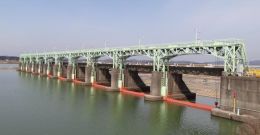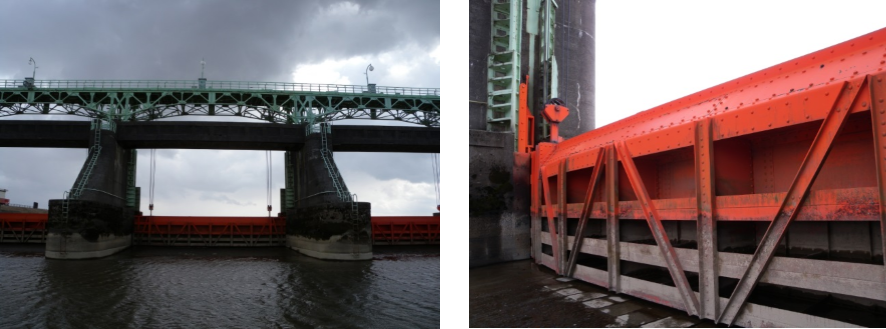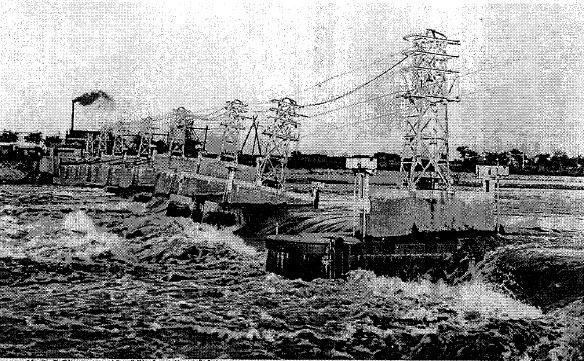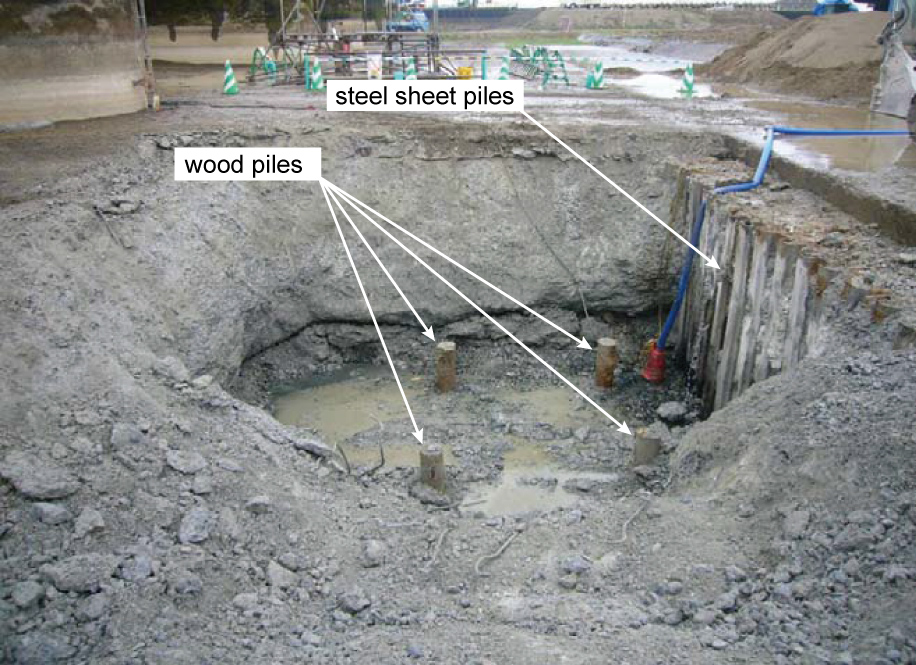Subcommittee on Research of the Old Movable Weir |
| 1. Introduction The JSCE-272 subcommittee was organized in January 2012. The subcommittee
is chaired by Professor Kyuichi Maruyama from the Nagaoka University of
Technology. The purpose of the subcommittee is to carry out scientific
and technical investigations of the old movable weir and pass down the
results to posterity.
2. Committee activities Historical Studies in Civil Engineering Group In order to identify the importance of the Ohkouzu movable weir in the history of modern large-scale river diversion structures in Japan, the following surveys were conducted from the viewpoint of civil engineering history.
Through these examinations, the following points were clarified.
River Engineering Group The Ohkouzu Diversion Channel protects the Echigo Plain from flooding by
the Shinano River. Many researchers in hydraulic engineering and hydrology
are interested in the channel because of its age and scale of construction.
The river channel is man-made and very long (10 km), so it represents a
long-term and large-scale alteration of nature. One of the technical difficulties
in managing the channel is to maintain the height of the riverbed. The
channel of the riverbed has been degrading since construction ended in
1922. The previous diversion weir was destroyed when the supporting ground
deformed in 1927.
So far, we have reviewed the literature, analyzed the data, and developed a numerical model of the river flow, sediment transportation, and changes in the riverbed’s topography.
The longitudinal distribution of the riverbed’s height is quite different from its natural and equilibrium conditions.
Erosion occurs in the upstream area and sedimentation occurs near the downstream end of the analysis domain.
Next year, we will improve the numerical model and conduct a more sophisticated data analysis.
Geotechnical Engineering Group
The cavities under the base of the old movable weir and the corrosion of the steel sheet piles and wooden piles were examined, and a statnamic test of the wooden piles' bearing capacity, was carried out to clarify the present conditions.
No cavities were found under the apron between the old movable weir and the first groundsill, but there are extensive cavities under the first groundsill, or under the old movable weir.
The steel sheet piles were not corroded, and wooden piles were in good condition.
Structural Engineering Group
Our group is investigating from a structural engineering point of view the steel frame structure that supports flood gates.
The frame structure consists of truss beams and trestles. Every second truss beam is supported by Gerber-type hinges on their upper chords.
Currently, few steel structures have trestles. Therefore, the design concept, structural characteristics, and maintenance work up to the present time are worthy of investigation.
So far, we have carried out a tensile test, a Charpy impact test, and a material component analysis for steel samples extracted from the frame structure. The test results show that the steel grade is equivalent to 400N/mm2 class steel, although the absorbed energy values from the Charpy impact test do not satisfy current Japanese industrial standards. For the safety evaluation, a 3D finite element model was created based on design drawings and an on-site investigation. The model was validated through vibration measurements using wireless accelerometers. The temperature stress and thermal expansion coefficient also were measured and compared with the results of a numerical analysis. Through these studies, we examined the influence of different types of the structure on the temperature stress. Concrete Engineering Group This group is investigating the deterioration of the concrete structures of the Ohkouzu Diversion Channel and the fundamental properties of the concrete, including its mechanical properties and durability.
To learn more about the Ohkouzu Diversion Channel, please visit the following web site: |



